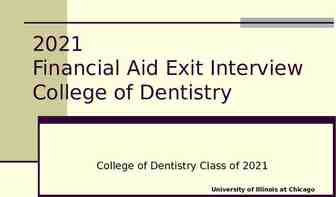Chapter Three Assessing the Internal Environment of the Firm
13 Slides126.50 KB
Chapter Three Assessing the Internal Environment of the Firm
TRANSPARENCY-20 Learning Objectives After studying this chapter, you should have a good understanding of: The benefits and limitations of SWOT analysis in conducting an internal analysis of the firm. The primary and support activities of a firm's value chain. How value-chain analysis can help managers create value by investigating relationships among activities within the firm and among the firm and its customers and suppliers. The different types of tangible and intangible resources, as well as organizational capabilities. The four criteria that a firm's resources must possess to maintain a sustainable advantage. The usefulness of financial ratio analysis as well as its inherent limitations. How to make meaningful comparisons of performance across firms. The value of recognizing how the interests of a variety of stakeholders can be interrelated. STRATEGIC MANAGEMENT McGraw-Hill/Irwin CHAPTER 3 Gregory G. Dess and G. T. Lumpk Copyright 2003 by The McGraw-Hill Companies, Inc. All rights
TRANSPARENCY-21 Exhibit 3.1 The Value Chain: Primary and Support Activities Support Activities The Value Chain ar M General administration Human resource management gi Technology development n Outbound logistics Operations Marketing and sales Service M ar g Inbound logistics in Procurement Primary Activities Source: Adapted with the permission of The Free Press, a division of Simon & Schuster, Inc., from Competitive Advantage: Creating and Sustaining Superior Performance by Michael E. Porter. Copyright 1998 by Michael E. Porter. STRATEGIC MANAGEMENT McGraw-Hill/Irwin CHAPTER 3 Gregory G. Dess and G. T. Lumpk Copyright 2003 by The McGraw-Hill Companies, Inc. All rights
Source: Adapted with permission of The Free Press, a division of Simon & Schuster, from Competitive Advantage: Creating and Sustaining Superior Performance by Michael E. Porter. Copyright 1985, 1998 by Michael E. Porter. The Value Chain: Some Factors to Consider in Assessing a Firm’s Primary Activities Location of Efficient plant Effective distribution facilities to minimize shipping times Excellent material and inventory control systems Systems to reduce time to send “returns” to suppliers Warehouse layout and designs to increase efficiency of operations for incoming materials operations to minimize costs Appropriate level of automation in manufacturing Quality production control systems to reduce costs and enhance quality Efficient plant layout and workflow design shipping processes to provide quick delivery and minimize damages Efficient finished goods warehousing processes Shipping of goods in large lot sizes to minimize transportation costs Quality material handling equipment to increase order picking Inbound Logistics STRATEGIC MANAGEMENT McGraw-Hill/Irwin Operations CHAPTER 3 Highly motivated Outbound Logistics and competent sales force Innovative approaches to promotion and advertising Selection of most appropriate distribution channels Proper identification of customer segments and needs Effective pricing strategies Marketing and Sales Effective use of procedures to solicit customer feedback and to act on information Quick response to customer needs and emergencies Ability to furnish replacement parts as required Effective management of parts and equipment inventory Quality of service personnel and ongoing training Appropriate warranty and guarantee policies GIN Exhibit 3.2 PROFIT M AR TRANSPARENCY-22 Service Gregory G. Dess and G. T. Lumpk Copyright 2003 by The McGraw-Hill Companies, Inc. All rights
TRANSPARENCY-23 Exhibit 3.3 The Value Chain: Some Factors to Consider in Assessing Firm’s Support Activities Effective planning systems to attain overall goals and objectives Ability of top management to anticipate and act on key environmental trends and events Ability to obtain low cost funds for capital expenditures and working capital Excellent relationships with diverse stakeholder groups Ability to coordinate and integrate activities across the “value system” Highly visible to inculcate organizational culture, reputation, and values General Administration Quality relations with trade unions Quality work environment to maximize overall employee performance and minimize absenteeism Reward and incentive programs to motivate all employees Human Resource Management PROFIT MAR Effective recruiting, development, and retention mechanisms for employees GIN Effective research and development activities for process and product initiatives Positive collaborative relationships between R&D and other departments State-of-the art facilities and equipment Culture to enhance creativity and innovation Source: Adapted with permission of The Free Press, a division of Simon & Schuster, Inc., from Competitive Advantage: Creating and Sustaining Superior Performance by Michael E. Porter. Copyright 1985, 1998 by Michael E. Porter. Excellent professional qualifications of personnel Ability to meet critical deadlines Technology Development Procurement of raw material inputs to optimize quality, speed and minimize the associated costs Development of collaborative “win-win” relationships with suppliers Effective procedures to purchase advertising and media services Analysis and selection of alternate sources of inputs to minimize dependence on one supplier Ability to make proper lease versus buy decisions STRATEGIC MANAGEMENT McGraw-Hill/Irwin CHAPTER 3 Procurement Gregory G. Dess and G. T. Lumpk Copyright 2003 by The McGraw-Hill Companies, Inc. All rights
TRANSPARENCY-24 Exhibit 3.4 The Resource Based View of the Firm: Resources and Capabilities Tangible Resources Financial Physical Technological Source: Adapted from J.B. Barney, 1991, Firm resources and sustained competitive advantage, Journal of Management, 17: 101; R.M. Grant, 1991, Contemporary Strategy Analysis (Cambridge, U.K.: Blackwell Business), 100102. Hitt, M.A., Ireland, R.D. & Hoskisson, R.E. 2001. Strategic Management: Competitivenesss and Globalization. Fourth Edition. South-Western College Publishing: Cincinnati, Ohio. Organizational Firm’s cash account and cash equivalents Firm’s capacity to raise equity Firm’s borrowing capacity Organization Capabilities Firm competences or skills the firm employs to transfer inputs to outputs Capacity to combine tangible and intangible resources, using organizational processes to attain desired end Modern plant and facilities Favorable manufacturing locations State-of-the-art machinery and equipment Trade secrets Innovative production processes Patents, copyrights, trademarks Effective strategic planning processes Excellent evaluation and control systems Intangible Resources Human Examples: Outstanding customer service Excellent product development capabilities Innovativeness of products and services Ability to hire, motivate, and retain human capital Experience and capabilities of employees Trust Managerial skills Firm-specific practices and procedures Innovation and creativity Technical and scientific skills Innovation capacities Reputation Brand name Reputation with customers for quality and reliability Reputation with suppliers for fairness, non-zero sum relationships CHAPTER STRATEGIC MANAGEMENT Gregory G. Dess and G. T. Lumpk 3 McGraw-Hill/Irwin Copyright 2003 by The McGraw-Hill Companies, Inc. All rights
TRANSPARENCY-25 Exhibit 3.5 Marks & Spencer: How Resources and Capabilities Lead to Advantages Competitive Advantages in Great Britain Resource Tangible Ownership (vs. leasing) of property Brand reputation Customer recognition with minimal advertising No promotional sales Employee loyalty Lower labor turnover 8.7% labor costs versus 10%-20% industry average Supplier chain Lower costs and higher quality of goods sold Intangible Source: Adapted from Collins, D. & Montgomery, C. 1995. Competing on resources: Strategy in the 1990s. Harvard Business Review, 73(4): 123. 1% of revenues allocated to occupancy costs (versus 3% to 9% industry average) Capabilities STRATEGIC MANAGEMENT McGraw-Hill/Irwin Managerial judgment CHAPTER 3 Fewer layers of hierarchy Gregory G. Dess and G. T. Lumpk Copyright 2003 by The McGraw-Hill Companies, Inc. All rights
TRANSPARENCY-26 Exhibit 3.6 Assessing Sustainability of Resources and Capabilities: Four Criteria Is the resource or capability . . . Implications Valuable Neutralize threats and exploit opportunities Rare Not many firms possess Difficult to imitate Physically unique Path dependency (how accumulated over time) Causal ambiguity (difficult to disentangle what it is or how it could be recreated) Social complexity (trust, interpersonal relationships, culture, reputation) Difficult to substitute No equivalent strategic resources or capabilities STRATEGIC MANAGEMENT McGraw-Hill/Irwin CHAPTER 3 Gregory G. Dess and G. T. Lumpk Copyright 2003 by The McGraw-Hill Companies, Inc. All rights
TRANSPARENCY-27 Exhibit 3.7 Criteria for Sustainable Competitive Advantage and Strategic Implications Is a Resource Valuable Rare Difficult to Imitate Without Substitutes Implications for Competitiveness No No No No Competitive disadvantage Yes No No No Competitive parity Yes Yes No No Temporary competitive advantage Yes Yes Yes Yes Sustainable competitive advantage Source: Adapted from Barney 1991. Firm Resources a Sustained Competitive Advantage. Journal of Management, 17:99-120. STRATEGIC MANAGEMENT McGraw-Hill/Irwin CHAPTER 3 Gregory G. Dess and G. T. Lumpk Copyright 2003 by The McGraw-Hill Companies, Inc. All rights
TRANSPARENCY-28 Exhibit 3.8 Historical Trends: ROS for a Hypothetical Company 20% 1, 2, 3 Return n Sales s ar Ye ar Ye , s4 Ye ar s 6 5, 6, 7, 8 8, 9 Years , 10 Yea rs 6 , 10% 1992 1993 1994 1995 1996 1997 1998 1999 2000 7, 8 , 9, 10 2001 Year STRATEGIC MANAGEMENT McGraw-Hill/Irwin CHAPTER 3 Gregory G. Dess and G. T. Lumpk Copyright 2003 by The McGraw-Hill Companies, Inc. All rights
TRANSPARENCY-29 Exhibit 3.9 How Financial Ratios Differ Across Industries Semiconductors Financial Ratio Grocery Stores Skilled nursing facilities Quick ratio (times) 1.5 0.5 1.1 Current ratio (times) 3.2 1.6 1.9 Total liabilities to net worth (%) 34.8 114.0 93.0 Collection period (days) 54.8 2.9 40.2 Assets to sales (%) 98.1 21.2 108.7 Return on sales (%) 3.1 0.9 2.0 Source: Dun & Bradstreet, Industry Norms and Key Business Ratios, 1999-2000. Desktop Edition. SIC # 0100-8999. STRATEGIC MANAGEMENT McGraw-Hill/Irwin CHAPTER 3 Gregory G. Dess and G. T. Lumpk Copyright 2003 by The McGraw-Hill Companies, Inc. All rights
TRANSPARENCY-30 Exhibit 3.10 Comparison of Procter & Gamble’s Drug Revenues and R&D Expenditures and Key Competitors COMPANY (OR DIVISION) P&G DRUG DIVISION SALES* (billions) R&D BUDGET (billions) 0.8 0.38 BRISTOL-MYERS SQUIBB 20.2 1.8 PFIZER 27.4 4.0 MERCK 32.7 2.1 * Most recently completed fiscal year. Data: Lehman Brother Procter & Gamble Co. Source: Berner, R. 2000. Procter & Gamble: Just say no to drugs. Business Week: October 9:128. STRATEGIC MANAGEMENT McGraw-Hill/Irwin CHAPTER 3 Gregory G. Dess and G. T. Lumpk Copyright 2003 by The McGraw-Hill Companies, Inc. All rights
TRANSPARENCY-31 Exhibit 3.11 ECI’s Balanced Business Scorecard Financial Perspective Internal Business Perspective GOALS MEASURES GOALS MEASURES Survive Cash Flow Manufacturing excellence Succeed Quarterly sales growth and Cycle time Unit cost Yield operating income by division Prosper Increased market share and ROE Design productivity Silicon efficiency Engineering efficiency New product introduction Actual introduction schedule versus plan Customer Perspective Innovation and Learning Perspective GOALS MEASURES GOALS MEASURES Technology leadership Time to develop next New products Percent of sales from new products Source: Adapted from Kaplan, R.S. & Norton, D.P. 1992. The balanced scorecard: Measures that drive performance. Harvard Business Review, 69(1): 71-79. Responsive supply On-time delivery (defined by generation Manufacturing learning Process time to maturity Product focus Percent of products that equal 80% sales customer) Time to market Customer Number of cooperative partnership STRATEGIC MANAGEMENT McGraw-Hill/Irwin New product introduction versus competition engineering efforts CHAPTER 3 Gregory G. Dess and G. T. Lumpk Copyright 2003 by The McGraw-Hill Companies, Inc. All rights


















